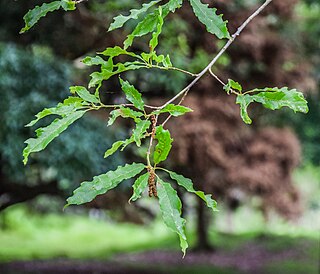
Quercus lancifolia is a species of oak found in Central America and Mexico.
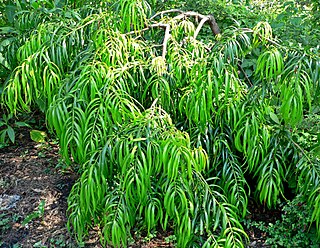
Podocarpus matudae is a species of conifer in the family Podocarpaceae. It is found in Guatemala, El Salvador, Honduras and Mexico.
Ilex quercetorum is a species of plant in the family Aquifoliaceae. It is found in Guatemala and Mexico. It is threatened by habitat loss.

Quercus benthamii is a species of oak in the family Fagaceae. It is native to the cloud forests of Central America and southern Mexico. It is threatened by habitat loss.
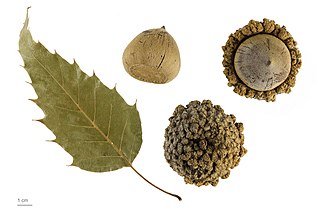
Quercus skinneri is a species of oak. It is found in Mexico, Guatemala, Honduras, and El Salvador. It is threatened by habitat loss.

Quercus uxoris is an uncommon species of oak.

Quercus xalapensis, or xalapa oak, is a species of oak in the red oak group. It is native to the mountains of eastern and southern Mexico, as well as Guatemala, Honduras, and Nicaragua in northern Central America.

Quercus polymorpha, the Mexican white oak, Monterrey oak or netleaf white oak, is a North American species of oak. It is widespread in Mexico, Guatemala, and Honduras, and known from a single population in the United States but widely planted as an ornamental.

Quercus castanea is a species of oak tree. It is widespread across much of Mexico, from Sonora to Chiapas, and in Guatemala, El Salvador, and Honduras.

Quercus elliptica is a Mesoamerican species of oak tree. It is widespread across central and southern Mexico and Central America from Sinaloa and Hidalgo south as far as Nicaragua. It is classified in Quercus sect. Lobatae.

Quercus insignis is a Mesoamerican species of oak in the white oak section, within the beech family. It is native to southern Mexico and Central America, from Veracruz to Panamá.
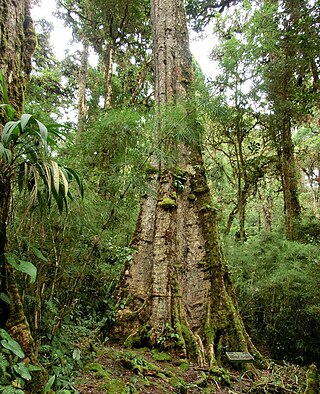
Quercus sapotifolia is a species of oak. It is native to southern and western Mexico as well as Central America. It is threatened by habitat loss.
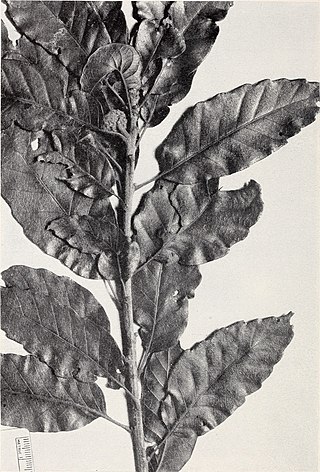
Quercus corrugata is a species of oak found in Central America and Mexico.

The Sierra Madre de Chiapas moist forests is a tropical moist broadleaf forest ecoregion in southern Mexico and southern Guatemala, extending into the northwestern corner of El Salvador.

Quercus cortesii is a species of oak native to Central America and southern Mexico.
Carpinus tropicalis is a species of tree native to central and southern Mexico, Guatemala, El Salvador, Honduras, and Nicaragua.

Quercus paxtalensis is a species of oak endemic to Mexico.

Quercus segoviensis is a species of oak native to southern Mexico and northern Central America. It is commonly known as k’antulán.
Cornus excelsa is a species of flowering plant in the dogwood genus (Cornus). It is native to mountain forests of Mexico, Guatemala, and Honduras.
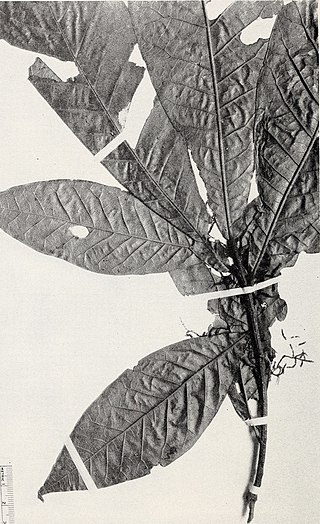
Quercus crispifolia is a species of oak tree. It is native to southern Mexico, Guatemala, and El Salvador. It is placed in section Lobatae.


















